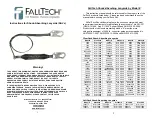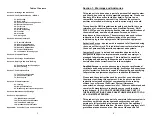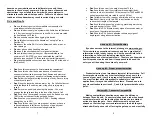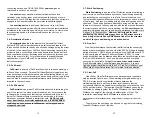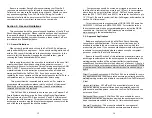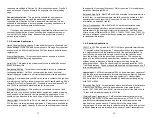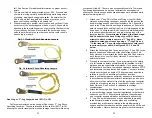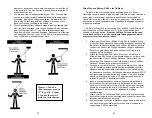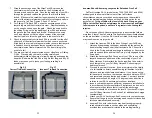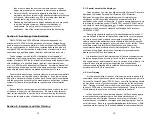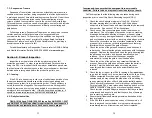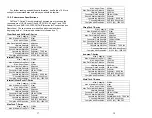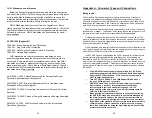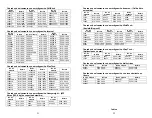
23
member or any anchor point where the rebar hook may slide off
in the event of a fall. See Section 5 for additional information on
proper anchor-points.
7. You are now tied-off and protected by your SAL. Proceed with
your work, moving carefully and deliberately while being aware
of slipping, tripping and snagging hazards. Be aware that the
SAL is only six feet long, and any of these may cause you to
loose your footing, resulting in a possible fall.
8. When transitioning from one anchorage to another, remain tied-
off to the first anchorage. Attach the Anchorage-End Connector
from the free leg of your “Y”-Leg SAL to the next anchorage.
Once tied-off to your second anchorage, disconnect from the first
and attach the free leg of your “Y”-Leg SAL to the lanyard keeper
on your FBH and proceed with your work.
Figures 3.3 and 3.4
show improper use of a
“Y”-Leg SAL. Figure
3.5 shows the correct
method of attachment.
24
WrapTech and Sliding-D SAL’s for Tie-Back
Tie-Back is the act of wrapping the anchorage-end of a Shock-
Absorbing Lanyard around a properly rated structural (member such as a
beam, pipe or scaffolding) and then connecting the Anchorage-End
Connector to the leg of the SAL, forming a closed loop. This is a useful
application for those situations where a traditional anchorage connector
may not be available.
FallTech’s
WrapTech
(model series 7241 and 8241) and “Sliding-D”
SAL’s (denoted by the presence of a “D” in the model number) are
suitable for this application.
No other FallTech SAL should be used
for tie-back as there is a risk of accidental disengagement, which
may result in serious injury or death.
1. Attach
your
WrapTech
or Sliding D-ring SAL to the back D-ring
of your Full Body Harness by depressing the keeper and opening
the gate on the double-locking snap hook at the attachment end.
Connect the hook to the D-ring and release the gate and keeper.
Ensure the gate closes and locks and that the D-ring is fully
engaged by the snap hook.
2. Attach the Anchorage-End Connector of your
WrapTech
or
Sliding D-ring SAL to one of the lanyard keepers on either end of
the chest strap of your Full Body Harness. Never attach the
Anchorage-End Connector to any other point on your Full Body
Harness: Serious injury or death could result.
3. Proceed to your work location. If you are working in the vicinity
of a fall hazard, calculate possible swing fall hazards, total fall
distance, and required clearance distance. If you have a swing-
fall hazard or do not have the required clearance distance, STOP
and reevaluate your application and system. Your work location
should never exceed an angle of 15 degrees in any direction in
relation to your SAL’s anchorage location.
4. Inspect your anchorage connector and ensure it is installed in
accordance with the manufacturer’s instructions, and so as to
allow no more than six feet of free fall (the anchorage connector
should be at or above the level of your back D-ring on your Full
Body Harness. See Section 5 for additional anchorage
considerations.
5. Attach your SAL’s Anchorage-End Connector to your anchorage.
Ensure that the gate on the anchorage-end connector closes and
latches automatically and securely.
6. If no anchorage connector is present and you need to tie-back to
a beam or other structural member, make sure it is capable of
supporting a 5,000 lb. static load.

